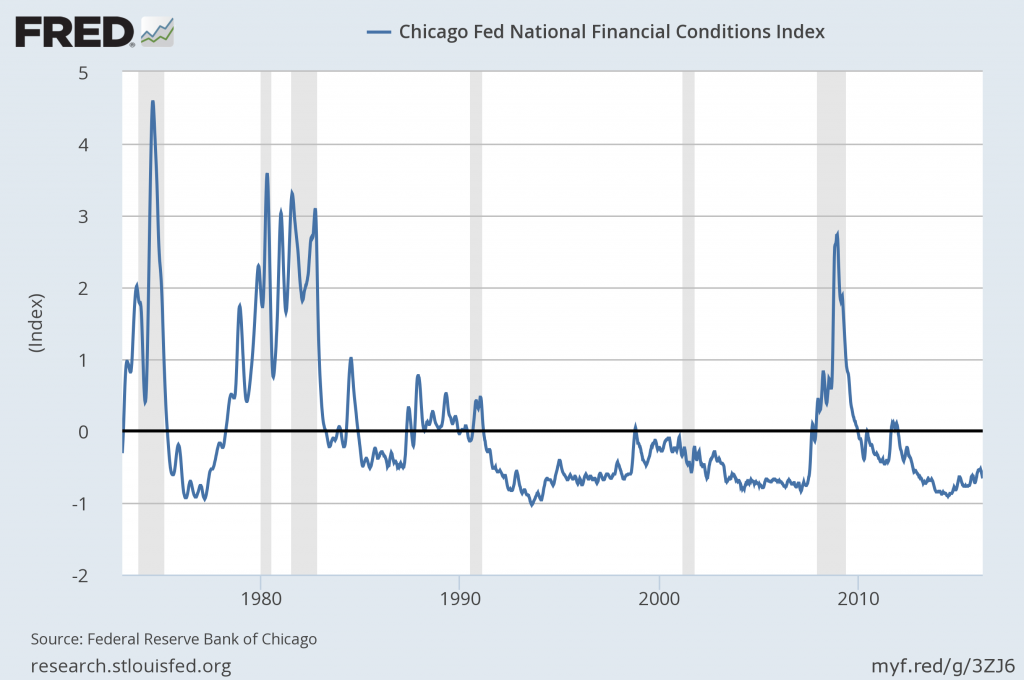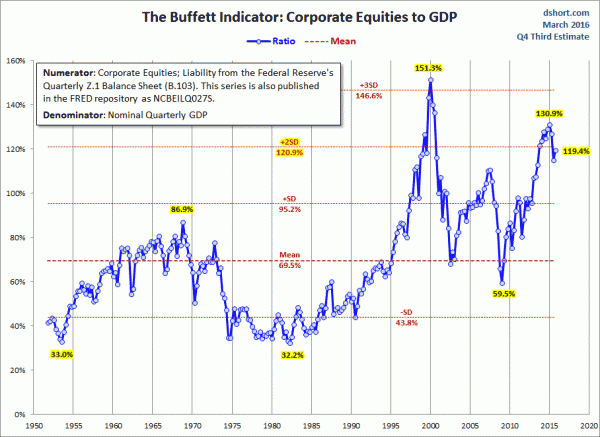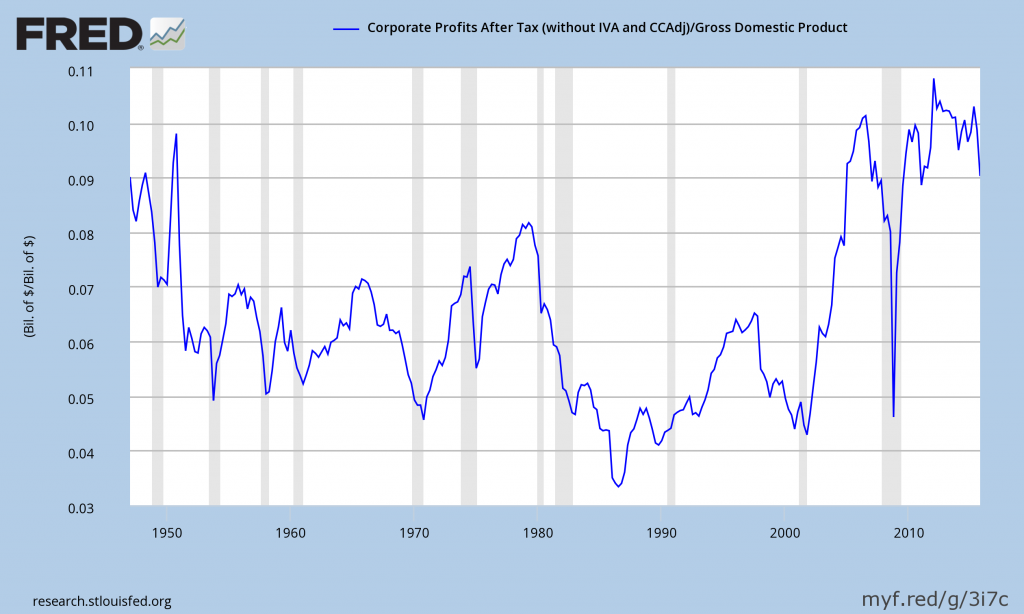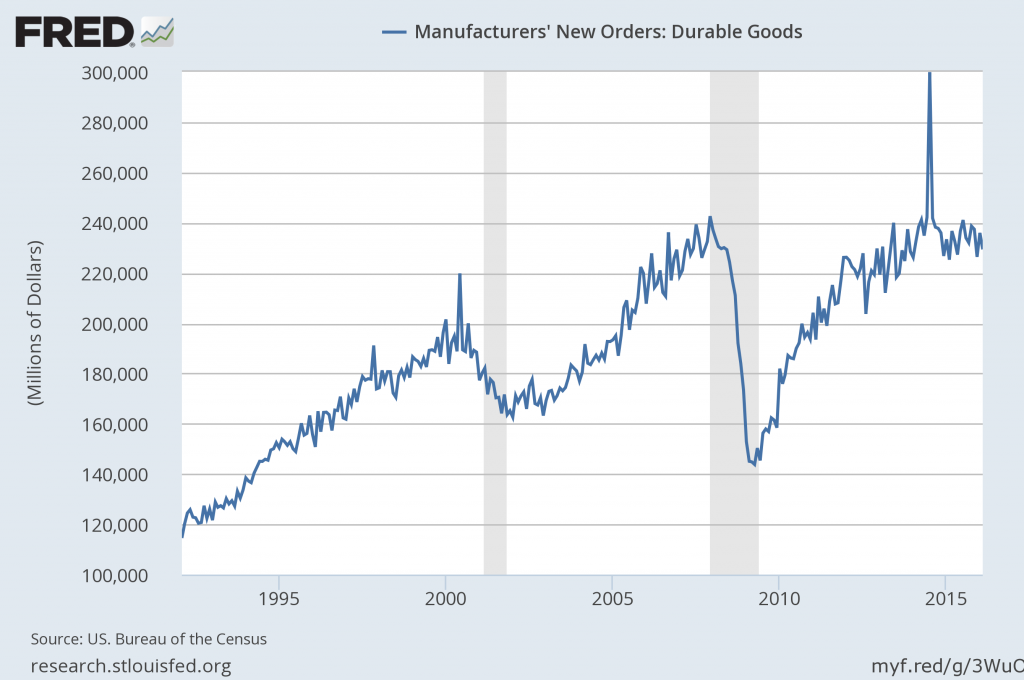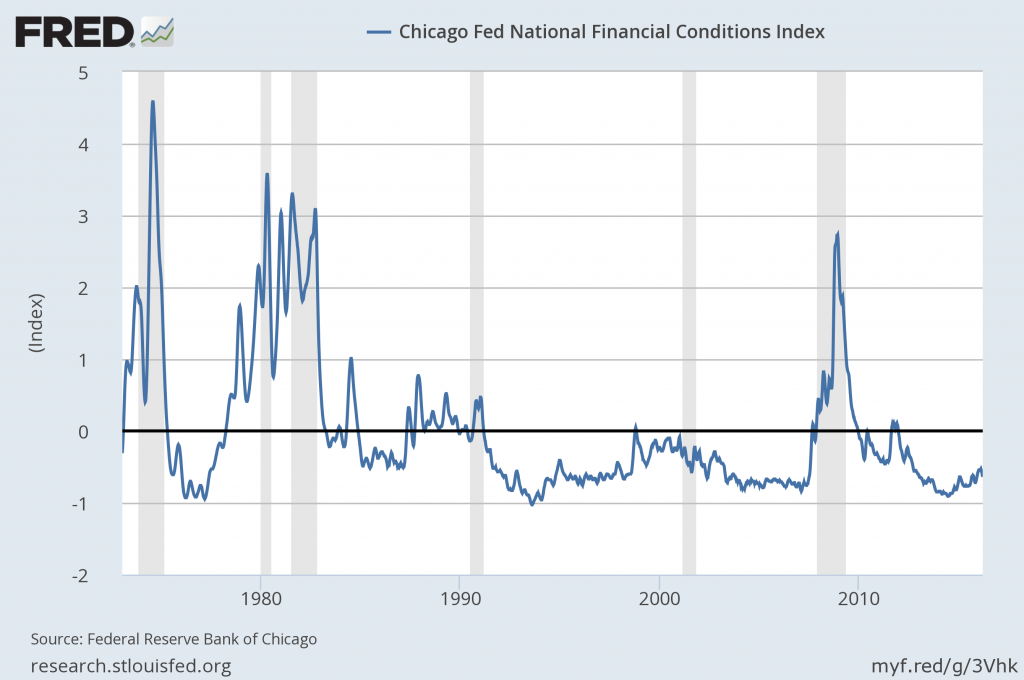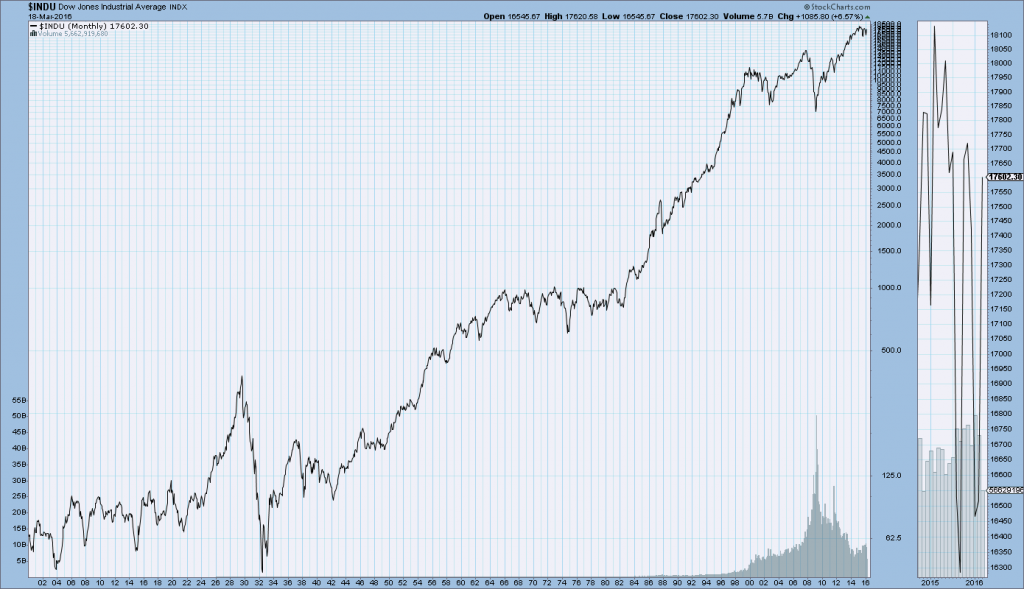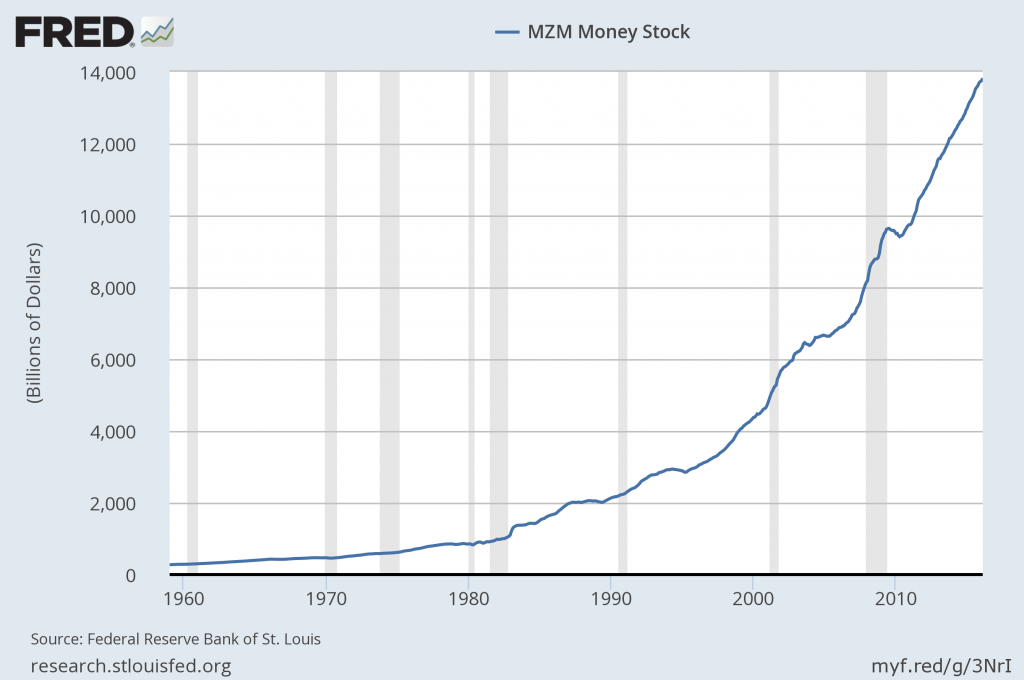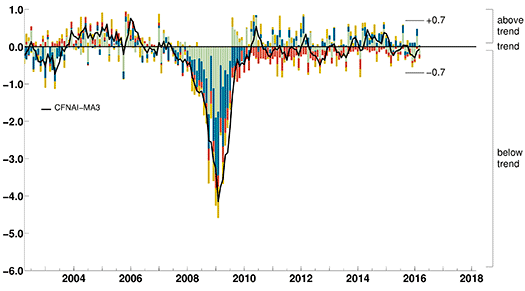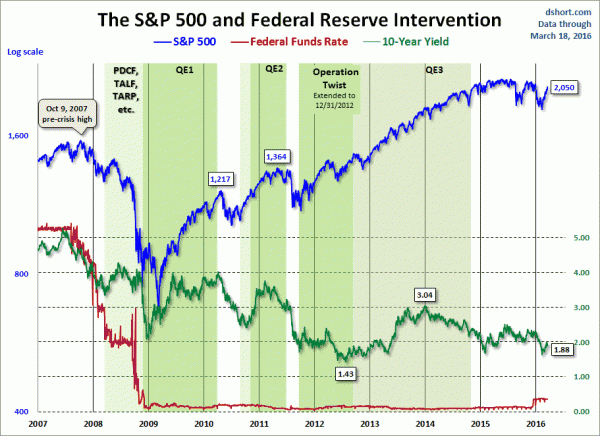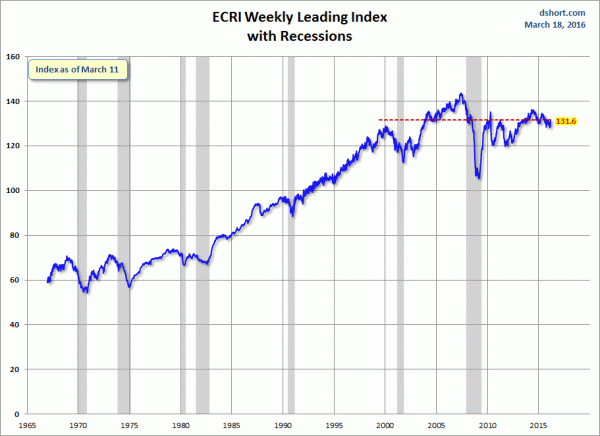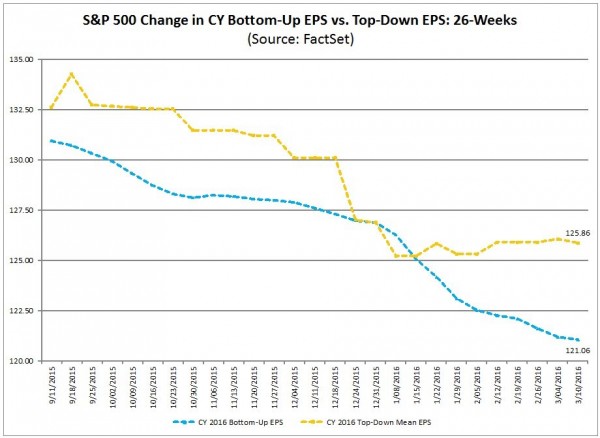Recently Deloitte released their “CFO Signals” “High-Level Summary” report for the 1st Quarter of 2016.
As seen in page 2 of the report, “One hundred eighteen CFOs responded during the two-week period ending February 19. Seventy-two percent of respondents are from public companies, and 83% are from companies with more than $1B in annual revenue. For more information, please see the “About the survey” section of this report."
Here are some of the excerpts that I found notable:
from page 3:
How do you regard the current and future status of the North American, Chinese, and European economies? Forty-one percent of CFOs describe North American conditions as good (55% last quarter), and 36% expect better conditions in a year (47% last quarter). Nine percent regard China’s economy as good (down from 14% last quarter), and 11% expect improvement (down from 16%). Five percent describe Europe as good (down from 8%), and only 17% see it improving in a year (up from 15%). Page 8.
Compared to the past 12 months, how do you expect your key operating metrics to change over the next 12 months?* Revenue growth expectations fell from 5.9% to 3.3%, only slightly above the previous survey low from 2Q15. Earnings growth expectations fell from 8.3% to a new survey low of 6.0%. Capital spending expectations fell drastically from 4.9% to just 1.7%—eclipsing the previous survey low of 4.2% by a wide margin. Domestic hiring growth expectations declined sharply to just 0.6%, well off last quarter’s 1.2% and matching the survey low. Pages 11-13.
*Averages are means that have been adjusted to eliminate the effects of stark outliers.
from page 4:
Less confidence in North American economy
Behind these declining growth expectations are assessments of the North American economy that, having been a steadying influence for many quarters, now appear to be faltering. Assessments of current performance are still mostly positive, but confidence in the economy’s trajectory hit its lowest level in three years. Among their most worrisome risks, CFOs voiced growing concern about the toll economic and equity market volatility will take on liquidity and on consumers’ willingness to spend.
Meanwhile, CFOs’ confidence in Europe remains weak, and their assessment of China hit yet another low. Not surprisingly, CFOs this quarter indicated their highestever focus on current geographies over new ones (which, for most surveyed companies, means a continued focus on North American markets).
One potential bright spot in CFOs’ sentiment: for the first time since we began asking in 1Q15, and in sharp contrast to all prior quarters, more surveyed CFOs believe US equity markets are undervalued than overvalued. (Note that the S&P 500 index averaged 1865 while the survey was open, but has since rebounded to about 2010, or by almost 8%).
from page 11:
Revenue and earnings
What are CFOs’ expectations for their companies’ year-over-year revenue and earnings?
Revenue[1]
Expectations fell back toward their 2Q15’s record lows, driven by weakness across all regions and nearly all industries:
- After rebounding from their 2Q15 survey-low 3.1% over the past two quarters, revenue growth expectations fell from 5.9% last quarter to just 3.3% this quarter. The median fell from 5.0% to 3.0%—a new survey low. Just 78% of CFOs expect year-over-year gains, matching the survey low. The distribution[2] of this quarter’s responses is narrow compared to last quarter and most recent quarters.
- Country-specific expectations are 3.3% for the US (down from 6.3% last quarter), 2.2% for Canada (down from 2.8%), and 4.5% for Mexico (down from 7.4%).
- Industry expectations are mostly very low, with Manufacturing lowest at just 0.7% and Services at just 1.4%. Energy/Resources rose slightly from 2.8% last quarter to 3.1% this quarter. All industries other than T/M/E were 4.4% or lower.
Earnings1
Expectations reversed recent gains and now sit at their survey low driven largely by weakness in Manufacturing and Financial Services:
- After rebounding from their low of 6.5% in the second and third quarters of last year, earnings expectations fell sharply from 8.3% last quarter to just 6.0% this quarter—a new survey low. The median dropped to just 5.0%, down from 7.0% last quarter. The percentage of CFOs expecting year-over-year gains fell from 82% last quarter to 79% this quarter, and the distribution2 of responses was about average.
- Country-specific expectations are 6.4% for the US (down from 9.2% last quarter), 4.2% for Canada (up from 3.3%), and 3.1% for Mexico (down from 6.5%).
- All industries expect positive growth, with Retail/Wholesale at 8.7% and both Healthcare/Pharma and T/M/E above 10%. Manufacturing is low at 5.2%, with Technology, Financial Services, and Services even lower at below 4%.
[1] All averages have been adjusted to eliminate the effects of stark outliers.
[2] “Distribution” refers to the spread of the middle 90% of responses.
from page 13:
Employment
What are CFOs’ expectations for their companies’ year-over-year hiring?
Domestic hiring[1]
Expectations fell sharply to match their 3Q12 survey low:
- Domestic hiring expectations fell to 0.6%, down substantially from last quarter’s 1.2% and matching the lowest level in this survey’s history. The median declined to 0.0%, well below the survey average of 0.7%. The proportion of CFOs expecting gains fell to 47%, also well below the average of 52%. The distribution[2] of responses is below average compared to recent quarters.
- Country-specific expectations are 0.7% for the US (down from last quarter’s 1.3%, and now at the lowest level in three years), -0.9% for Canada (down from 0.6% last quarter), and 2.7% for Mexico (up from 0.5% last quarter).
- Technology and Financial Services are highest at 1.6% and 1.4%, respectively (but still low by historical standards). Energy/Resources again indicated contraction at -0.3% (but that is up from -1.2% last quarter), with T/M/E lowest at -1.3%.
Offshore hiring1
Expectations declined sharply and are again well below their long-term survey average:
- Offshore hiring growth fell to 1.9%, down from last quarter’s 2.8% and now at the lowest level since 2Q14. The median remains at 0.0%, and 45% of CFOs expect year-over-year gains (down from last quarter’s 49%).
- Country-specific expectations are 1.8% for the US (down from 3.0%), 2.8% for Canada (up from 2.4%), and 0.4% for Mexico (down from 0.8%).
- Technology indicates the highest expectation at 3.4%, with Energy/Resources and Manufacturing both the lowest at about 1.0%.
Domestic wage growth1
Expectations down slightly, but still indicative of substantial upward wage pressures: • Domestic wage growth declined to 2.5%, down slightly from last quarter’s 2.7%. The median held at 3.0%, and 90% of CFOs expect year-over-year gains.
- Country-specific expectations are 2.5% for the US, 2.1% for Canada, and 4.1% for Mexico.
- All industry-specific expectations are between 2.2% and 3.1%, with Energy/Resources and Healthcare/Pharma on the low end and Services highest.
[1] All averages have been adjusted to eliminate the effects of stark outliers.
[2] “Distribution” refers to the spread of the middle 90% of responses.
Please see full report for industry-specific findings.
from page 15:
Most worrisome risks
Which external and internal risks do CFOs regard as most worrisome?
External concerns: Very strong concerns about the interplay of economic volatility, financial markets, and consumer confidence:
- Rapidly escalating concerns about global economic volatility: Last quarter, CFOs’ concerns appeared to shift from a specific focus on Europe and China to a more generalized focus on global economic stagnation and volatility. This quarter’s findings show a strong acceleration of that trend.
- Rising concerns about US economy and consumer spending: Worries rose about a US pullback, with sharply rising concerns about the toll economic and equity market volatility might take on consumers’ willingness to spend.
- Drastically rising concerns about financial markets: With equity markets falling sharply between surveys, concerns about financial markets skyrocketed this quarter. Many CFOs voiced concerns that rising perceptions of global economic instability might affect the sentiment of financial institutions and investors, which might in turn depress equity valuations and, ultimately, reduce liquidity and consumer spending. FX concerns continued.
- Rising commodity price worries: Worries about oil and other commodity prices continued to rise this quarter.
- Continuing policy and regulation concerns: Regulatory concerns are again strong and industry dependent. The 2016 US presidential election emerged as a significant concern last quarter and continues to be a factor this quarter.
- Declining concerns about competition: Concerns about industry dynamics and competitive behavior continued, but appeared to take a back seat to economic and financial markets concerns.
Internal concerns: Rising focus on adapting to tough conditions
- Escalating execution concerns: CFOs voiced growing concerns about executing and adapting their operations and initiatives as business conditions shift.
- Pricing and margin concerns: Concerns about managing prices and cost structures rose markedly this quarter.
- Key talent retention challenges: Concerns around retention and leadership turnover rose this quarter.
–
Among the various charts and graphics in the report are graphics depicting trends in “Own Company Optimism” and “Economic Optimism” found on page 6.
_____
I post various business and economic surveys because I believe they should be carefully monitored. However, as those familiar with this blog are aware, I do not necessarily agree with many of the consensus estimates and much of the commentary in these surveys.
_____
The Special Note summarizes my overall thoughts about our economic situation
SPX at 2064.50 as this post is written
